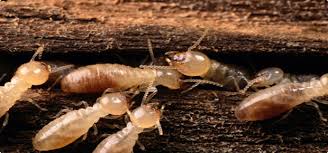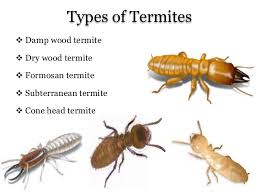
Getting My Termite Control Products Bunning's To Work
Schedorhinotermes intermedius is your 2nd termite economically in many regions of Australia, according to ABIS. Workers build a coating above their areas to protect themselves from the surroundings, contrary to other termite species that tunnel within the wood to feed.
Intermedius occurs mostly in coastal regions by SE Queensland. There Are Lots of closely related species that occur in different areas of Australia: S. actuosus, S. breinli, S. derosus, S. seclusus, S. reticulatus (See the Pa DIL Australian Biosecurity website for more details)
Fumigatus live on decayed wood, nesting in the floor and in colonies. Like decking boards on verandas round the exterior of homes, they feed on timber. Sound timber is not attacked by them .
The soldiers are somewhat smaller compared to the employees, with a body around 4mm. The head is light orange and nasute (pointed snout).
The 9-Minute Rule for Termite Control Products Bunning's
Nasutitermes walkeri feeds on decayed and Engineered hardwood timber in conditions or in contact with the ground. It nests in root crowns where there is fire or decay damage and also assembles ball-shaped nests high up in fire-damaged trees. Subterranean tunnels radiate out throughout the ground of the tree. .
Soldiers are smaller compared to employees. Their body length is 5-7mm, the largest of those Nasutitermes species. The mind is orange and nasute (pointed snout).
Walker occurs in coastal regions and the basin in New South Wales and Queensland.
ENTFACT-60 4: Termite Control: Answers for Homeowners   Download PDF  from Michael F. Potter, Extension Entomologist University of Kentucky College of Agriculture The University of Kentuckys Entomology Department receives many calls about termites. Subterranean (soil-dwelling) termites are severe pests of buildings and usually warrant attention by an expert. Control could be confusing, however, and homeowners have questions.
Termite Control Rates Things To Know Before You Buy
NOTE: Answers provided in this novel are based on requirements in Kentucky, with value throughout much of the USA. Nonetheless, termites and remedies vary with locale, so you might need to seek advice from your regional extension support about recommendations for your region. Q: Why worry about termites A: Termites cause billions of dollars in damage each year from the U.S.
Termites can injure shrubs and trees, but more often are a secondary invader of sterile plants already in decline. While buildings may be infested by termites at any time, they are particularly relevant when buying or selling a home since a termite inspection/infestation report is normally a condition of sale. Aside from the impact, tens of thousands of winged termites appearing inside the house are an emotionally stressful experience not to mention the thought of termites you could look here feasting on one's largest investment.
1: Termites are effective at resisting costly damage.  Q: Why are infestations often discovered in the spring A: Spring typically is when large numbers of winged termites, called"swarmers," emerge inside homes. In nature, termites swarm to disperse and begin new colonies. The winged termites emerge in the colony and then fly into the atmosphere.

What Does Termite Control Quotation Do?
Winged termites frequently confuse with rodents, which are inclined to swarm at precisely the same time annually. Termites have straight antennae, a uniformly thickened waist, and wings of equal dimensions. Conversely, ants have elbowed antennae, constricted waists. Fig. 3:Â Termite swarmers are usually confused with winged ants.
Outside in the yard aren't necessarily cause for concern, and do not necessarily mean the house is infested. On the flip side, from abutting patios or porches or if swarmers are emerging alongside the foundation, there's a good chance. Other signs of infestation are earthen mud tubes stretching over base walls, support piers, sill plates, floor joists, etc..
As they travel between their colonies and the structure, termites assemble the tubes for refuge. To help determine if an infestation is active, the tubes might be broken open and assessed for the presence of little worker termites. If a tube happens to be empty, it does not necessarily signify that the infestation is inactive; whilst foraging elsewhere in the construction, termites frequently abandon sections of tubing.